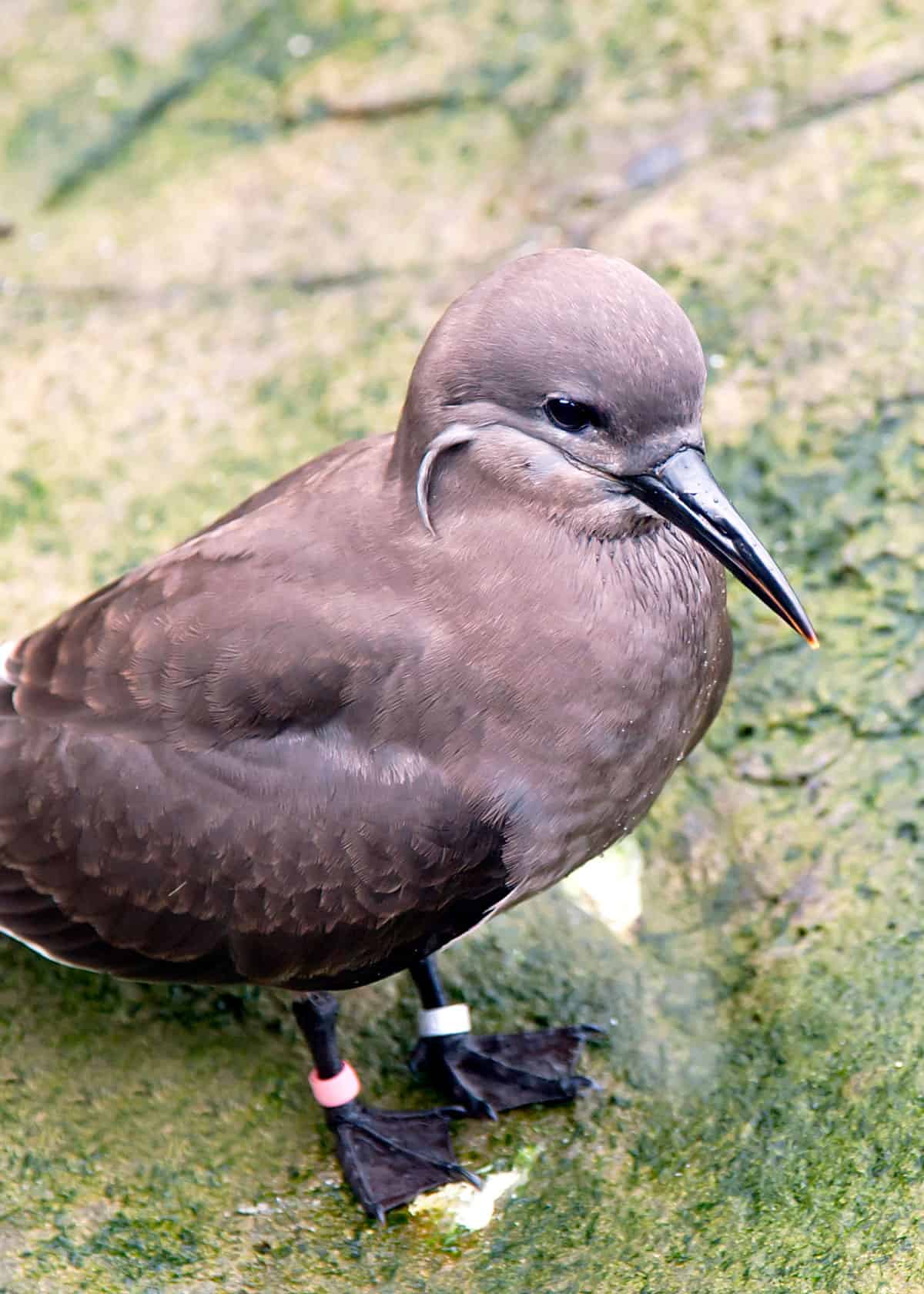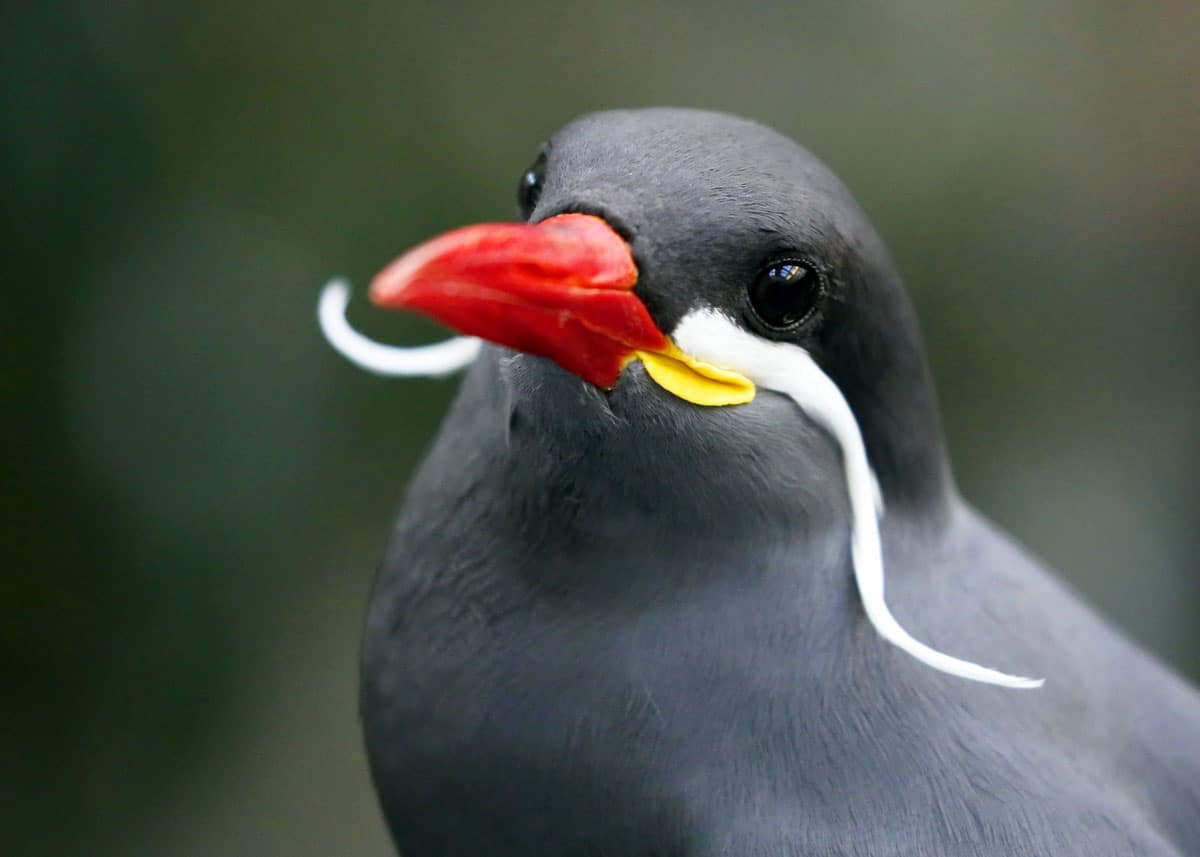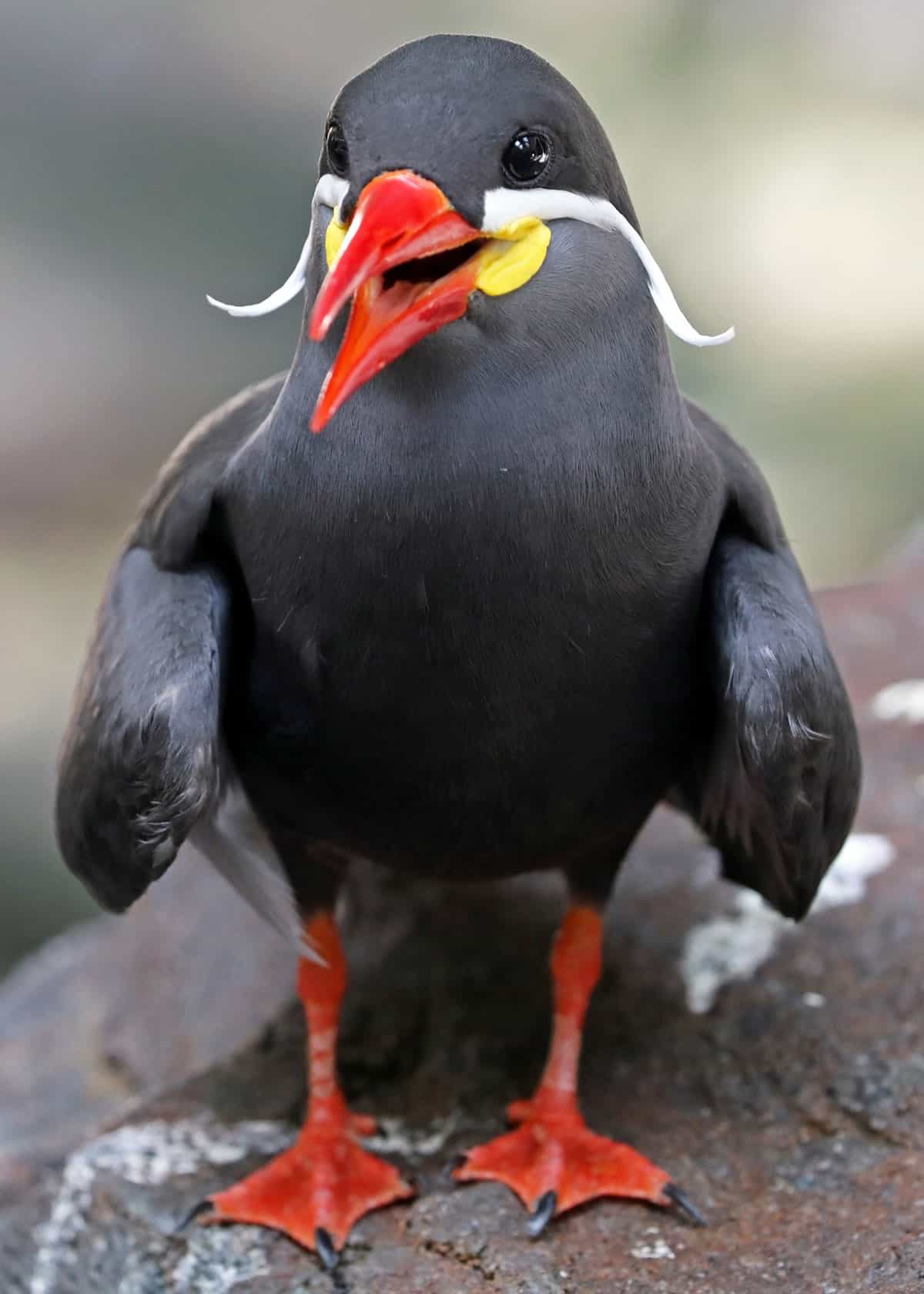Let’s take a look at 30 beautiful pictures of Inca swallows: Super cute mustache bird

-
- Weight: It weighs approximately 6.35 to 7.40 ounces (180 to 210 g).
- Wingspan: The wingspan of an Inca tern is about 31.5 inches (80 cm).

- Unique Feature: Its most distinctive feature is a handlebar mustache made of white feathers on each side of its bill. Both sexes have the mustache, but juveniles develop it at around two years old.
- Mustache’s Purpose: The length of the Inca tern’s mustache indicates its health condition. Longer mustaches are associated with better health, leading to increased attraction and more successful reproduction.
- Social Behavior: Inca terns are sociable and form large colonies. While they get along well with each other, they may appear aggressive to other birds, dolphins, and sea lions.
- Lifespan: In the wild, Inca terns can live up to 14 years, while in captivity, they may live up to 25 years.
- Predators and Threats: Inca terns face threats from predators such as cats, rats, sea lions, and raptors. Overfishing and excessive guano harvesting also pose risks to their survival.
- Conservation Status: Inca terns are currently listed as Near Threatened by the IUCN due to declining population numbers.
- Diet: They are piscivores, primarily feeding on fish, particularly anchovies. They also scavenge for scraps from sea lions, dolphins, whales, and fishing boats.
-

- Latin Name: The scientific name for the Inca tern is Larosterna inca.
- Habitat: Inca terns reside along the Pacific coasts of Chile and Peru, specifically in the vicinity of the Humboldt Current.
- Nesting: They nest in colonies, utilizing holes, crevices, burrows in rocky cliffs, and sometimes the abandoned nests of Humboldt penguins or human structures.
-

- Parental Care: Both male and female Inca terns participate in incubating the eggs and feeding the chicks until they are ready to fledge.
- Vocalization: The Inca tern’s call has been described as a “cat-like meow” and can be quite loud, especially during courtship and territorial displays.

- Disease Carriers: Inca terns can carry diseases like avian malaria and avian influenza, particularly when sharing environments with waterfowl.
- Observation: To see Inca terns, you can visit the Pacific co